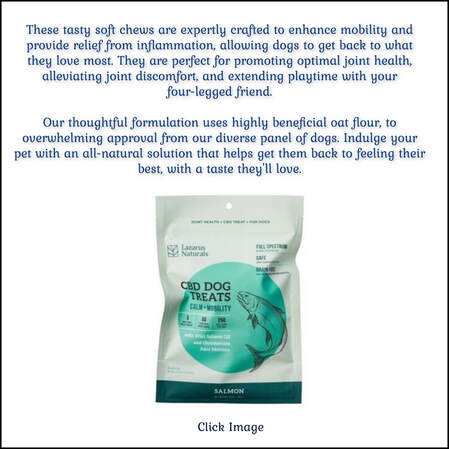|
Dr. Becker
Probably the most confusing type of arthritis for pet owners to understand is the immune-mediated variety. In this type of arthritis, joint inflammation is caused by the immune system attacking the body -- in this case, a joint or multiple joints. “Poly” simply means that multiple joints are involved. When an animal has IMPA, white blood cells from the immune system, called neutrophils, invade the joints of her body. The normal job of neutrophils is to fight bacteria and other pathogens that invade the body by releasing large amounts of irritating substances in the surrounding tissue. In immune-mediated arthritis, the irritating substances from the neutrophils are released into the joint, causing swelling, pain, and a host of other symptoms. |
|
Immune-mediated polyarthritis can be either erosive or non-erosive. In the non-erosive form, there is no destruction of bone or cartilage. In erosive IMPA, there is bone and cartilage destruction in one or more affected joints. The erosive type is very similar to rheumatoid arthritis in humans. Fortunately, erosive IMPA is rare in pets, accounting for less than one percent of all reported cases. The non-erosive form of the disease can occur in dogs regardless of breed, size, or gender. It is most common in dogs between 4 and 6 years of age, but is rare in cats.
Symptoms can include a stiff gait, lameness, trouble standing on a joint or joints, and spinal pain. There can also be signs of illness that include loss of appetite, weight loss, fever, lethargy, and enlarged lymph nodes. About 25 percent of dogs with the disease have systemic signs with little or no obvious joint-related symptoms. About 20 percent of dogs with fever of unknown origin are ultimately diagnosed with immune-mediated polyarthritis. It should always be considered as a possible factor in dogs with fever unrelated to another illness. Most cases of immune-mediated polyarthritis in dogs are considered idiopathic in origin – meaning we can’t determine an underlying reason for the condition. |
Non-Erosive Immune-Mediated Polyarthritis
|
Non-erosive idiopathic IMPA is separated into four subtypes depending on whether there are other concurrent diseases. Treatment actually depends on the subtype that’s identified.
IMPA is frequently diagnosed in dogs suffering from systemic lupus erythematosus or SLE. Treatment of SLE polyarthritis is similar to the treatment of idiopathic forms, which in traditional veterinary practice means administering immunosuppressive and immunomodulating drugs. If other organs are involved, treatment must also address those clinical signs. There is another form of non-erosive IMPA called polyarthritis-meningitis syndrome in which steroid-responsive meningitis occurs with polyarthritis in young, male, medium-to large-sized dogs. Treatment of the two conditions is similar, but the syndrome is important to recognize since recurrence or neurologic damage can occur without proper treatment. |
Other causes of IMPA are drug-induced polyarthritis and vaccine-associated polyarthritis.
|
Administration of certain medications, especially sulfonamides, antibiotics – lincomycin, erythromycin, cephalosporins, phenobarbital, and penicillins – as well as the anti-seizure drug phenobarbital, have been implicated in the development of immune-mediated polyarthritis in Dobermans and other large-breed dogs. Treatment involves discontinuing the drug, with improvement generally noted within 24 hours, and a complete recovery within 2 to 5 days of drug withdrawal.
Vaccines have been implicated in the development of IMPA, and when this occurs, typically we begin noticing symptoms within 30 days of vaccination. But that’s not always the case. |
|
Canine distemper antigens have been found in immune complexes from the joints of dogs with the erosive form of IMPA. According to the literature, most vaccine-associated IMPA cases are self-limiting and may require a short course of immunosuppressive treatment. In my opinion, animals that have had adverse vaccine reactions, including vaccine-induced IMPA, should receive no further vaccinations of any kind.
There is yet another form of non-erosive IMPA called breed-specific polyarthritis that has been reported in adolescent Akitas that may also have concurrent meningitis or other organ involvement. Chinese Shar-Peis can develop “Shar-Pei fever” or “swollen hock syndrome.” In both these types of immune-mediated polyarthritis, the prognosis is often poor due to the presence of other concurrent conditions or diseases. |
Erosive Immune-Mediated Polyarthritis
|
The two main types of erosive IMPA are idiopathic and a form of the disease that affects Greyhounds exclusively.
Idiopathic erosive IMPA is seen more commonly is smaller breeds of both sexes, with an average age of 2 to 6 years. Symptoms include stiffness, intermittent lameness, swelling of a single or multiple joints, fever, lethargy, loss of appetite, and lymph node enlargement. Erosive polyarthritis is a progressive disease that results in connective tissue degeneration and increasing joint instability. Traditional treatment involves the use of immunosuppressive, disease-modifying, or anti-inflammatory drugs. Therapy must be administered for the life of the animal. Long-term prognosis for these cases is unfortunately poor. Erosive polyarthritis in Greyhounds is a sporadic disease that affects young dogs between 3 and 30 months of both genders. This form of IMPA progresses more slowly than idiopathic erosive polyarthritis and doesn’t do as much damage. Traditional treatment is similar to idiopathic erosive polyarthritis. |
Diagnosis and Treatment of Erosive IMPA
|
The definitive test for IMPA is a joint tap and analysis of the fluid sample. The joint tap may require that your pet be sedated, especially because multiple joints will probably be tapped. Since immune-mediated polyarthritis often occurs secondary to other diseases or conditions, additional diagnostic tests should be performed. A minimum test set will include a urinalysis, urine culture, and X-rays to identify whether the disease is erosive or non-erosive. Sometimes an ultrasound can be helpful as well.
As you can see, it’s very important to get a correct diagnosis of the type of arthritis that’s occurring in your pet. Immune-mediated disease is an overreaction of your pet’s immune system, and using any type of natural immune support or immune stimulant would be extremely detrimental and could actually exacerbate your pet’s condition. Working with a holistic veterinarian and a rehab therapist will afford you the best opportunity to select the correct protocol for your pet’s specific type of arthritis. |
|
In all cases of arthritis, it’s important to feed an anti-inflammatory diet, as your pet is suffering from inflammatory pain. The food you feed will either exacerbate the pain or help ameliorate it. Foods either heal or harm. Feeding a grain-free, low-carb diet is important, as well as incorporating an abundance of antioxidant-rich veggies and fruits. I recommend avoiding feeding vegetables in the nightshade family – that means no potatoes, tomatoes, or peppers – as these foods are pro-inflammatory. Ideally, a balanced, species-appropriate fresh food diet is best for arthritis patients. I also recommend reducing unnecessary vaccines and insecticide applications for animals fighting chronic inflammation. Talk to your holistic veterinarian about vaccine titers and alternatives to the ingestion or topical application of pesticides and insecticides. Sourced by: Dr. Becker |
**Canine Arthritis And Joint is intended for informational, educational and entertainment purposes only and is not a substitute for medical advice, diagnosis or treatment. Do not attempt to self-diagnose or treat any health condition. You should always consult with a healthcare professional before starting any diet, exercise or supplementation program, before taking any medication, or if you have or suspect your pet might have a health problem. The opinions expressed by Canine Arthritis And Joint are not to be replaced for medical care. This website and the information contained herein have not been evaluated by the Food and Drug Administration. The information and opinions on Canine Arthritis And Joint are not intended and cannot be used to diagnose, treat, cure, or prevent any disease. This applies to people and pets!
This site uses affiliate links such as banners you may see that allows for paid commissions.
This site uses affiliate links such as banners you may see that allows for paid commissions.
Canine Arthritis And Joint © Copyright 2015-2024
Designed By Paw Prints Web Design
Designed By Paw Prints Web Design











